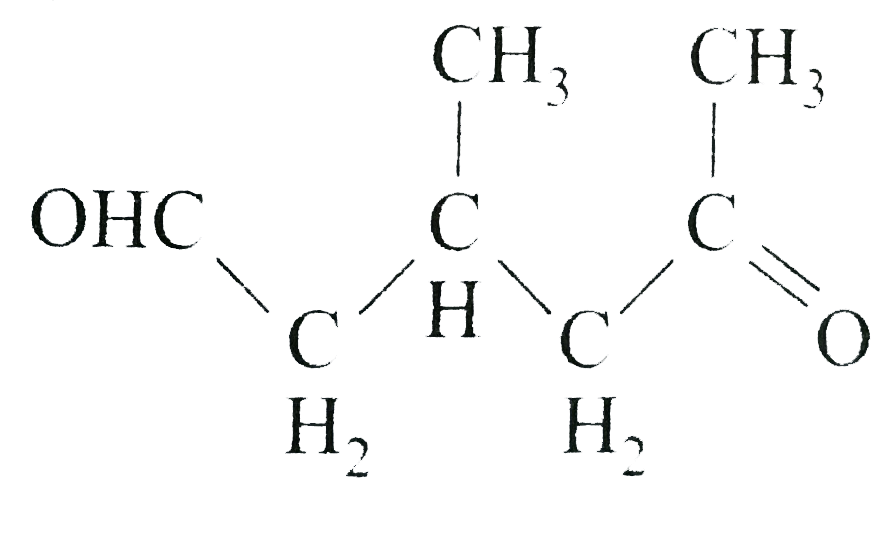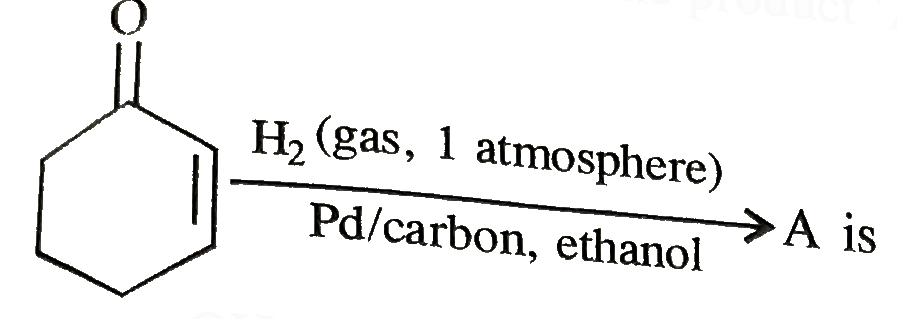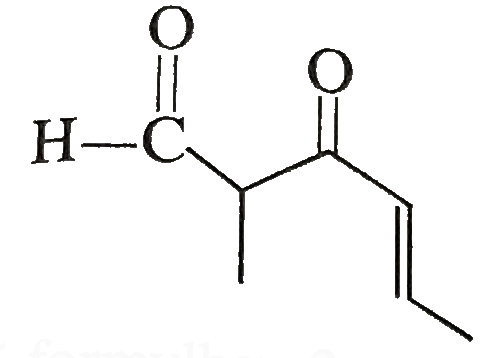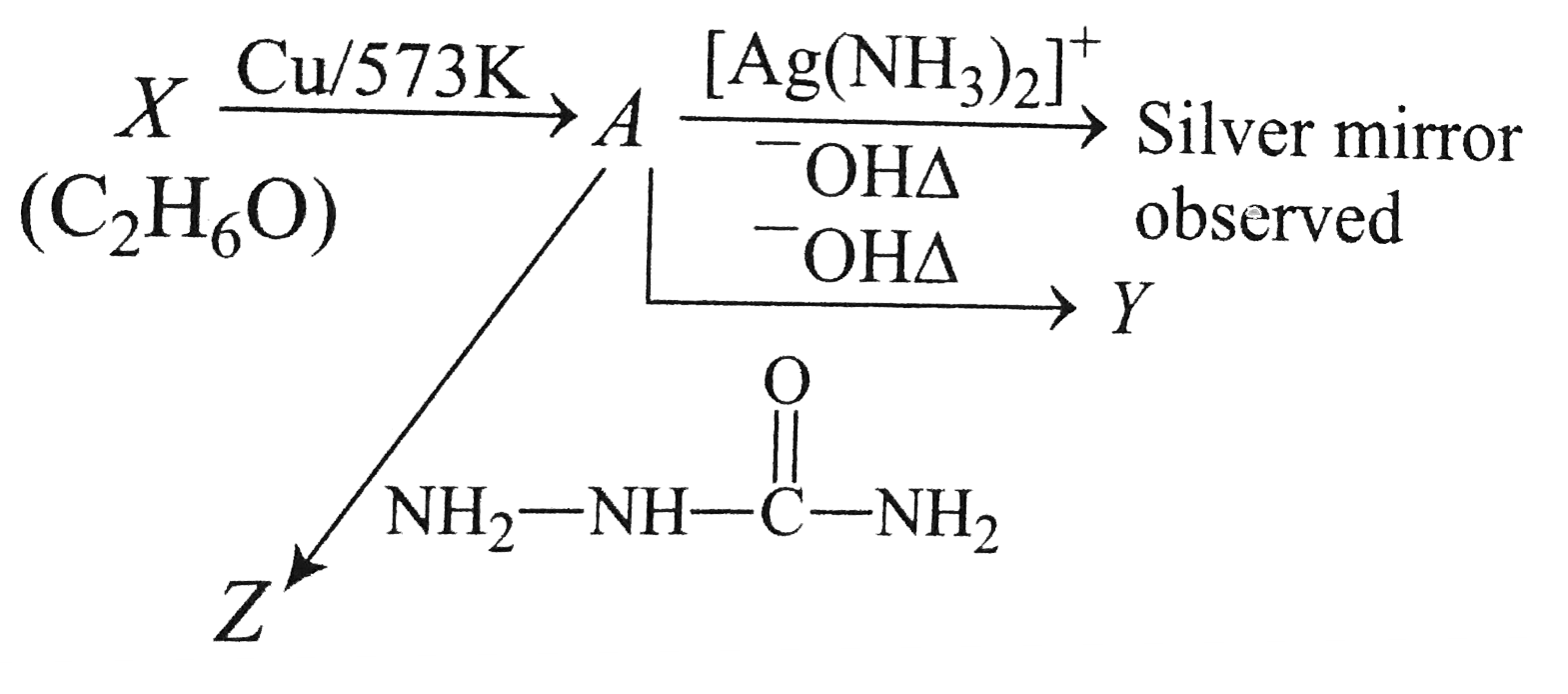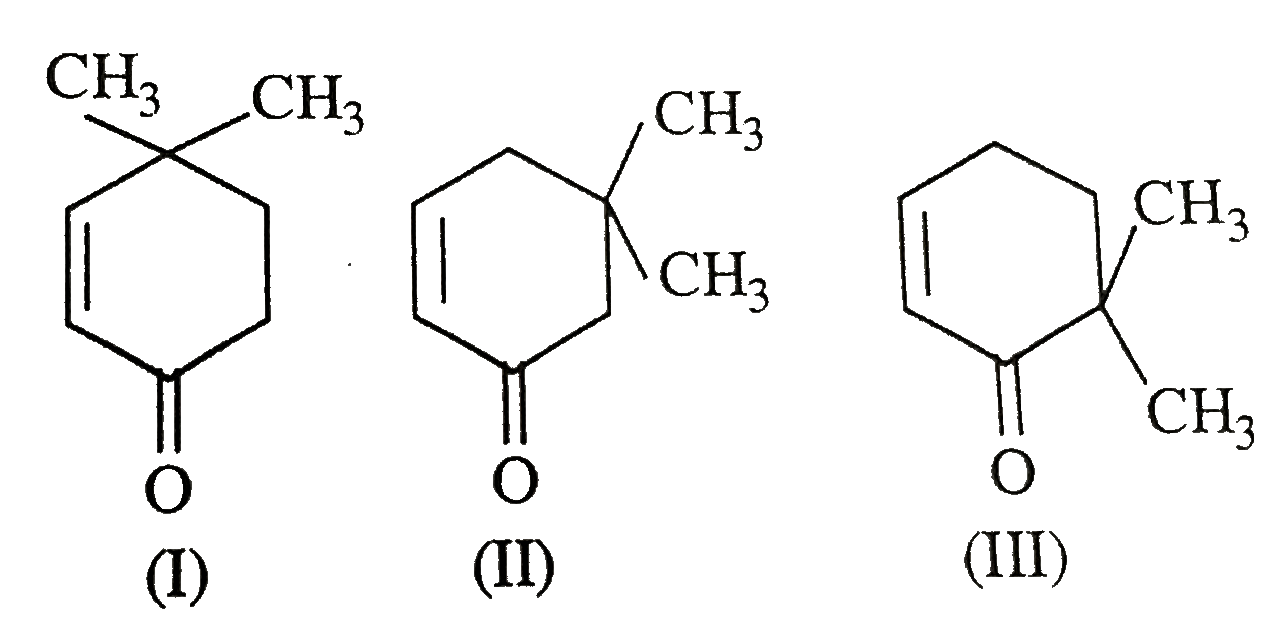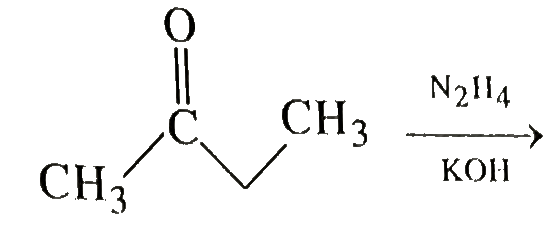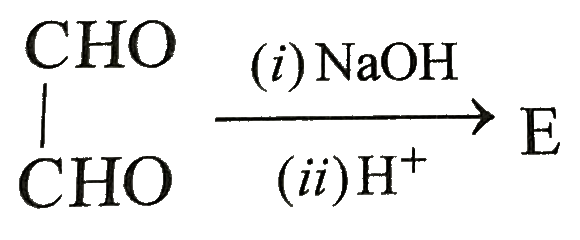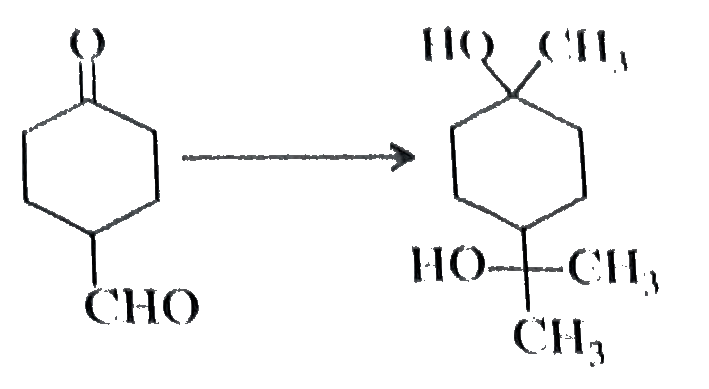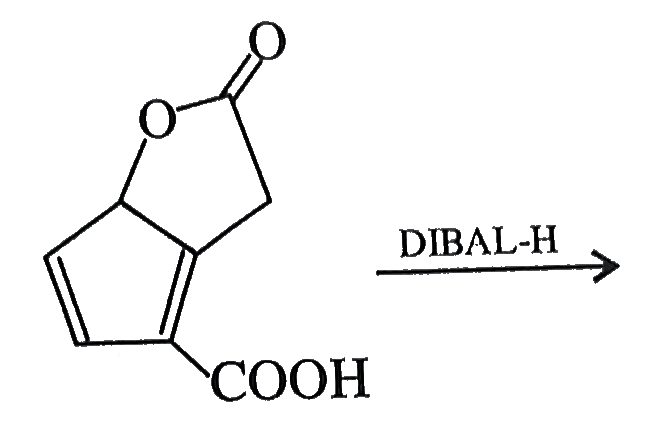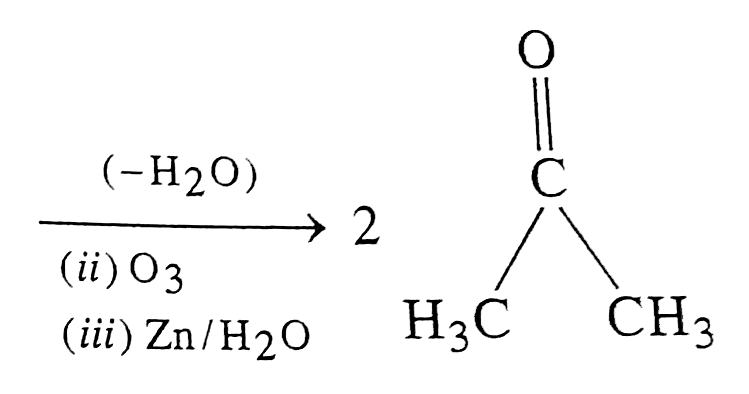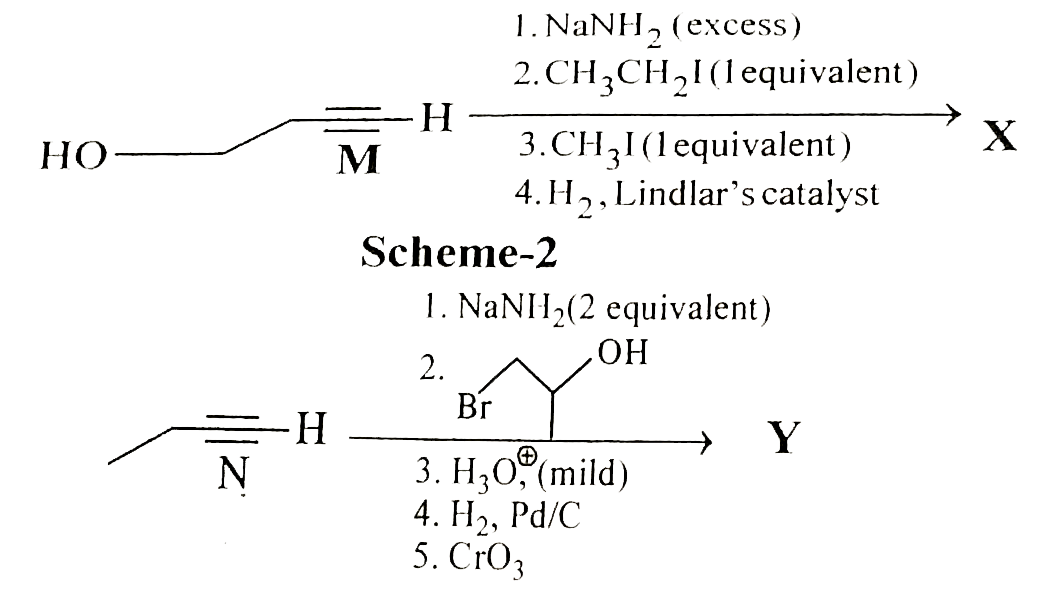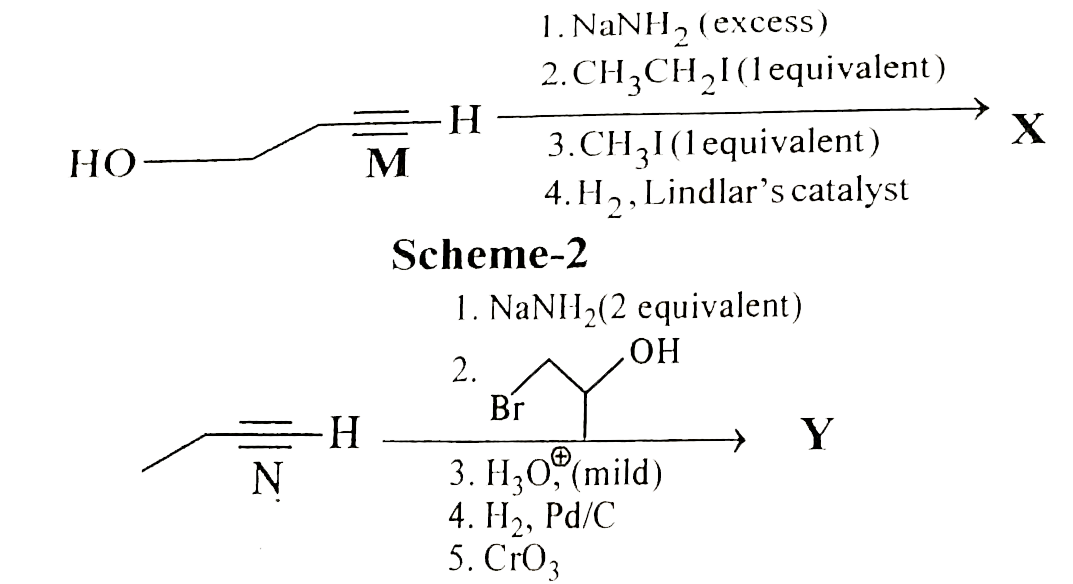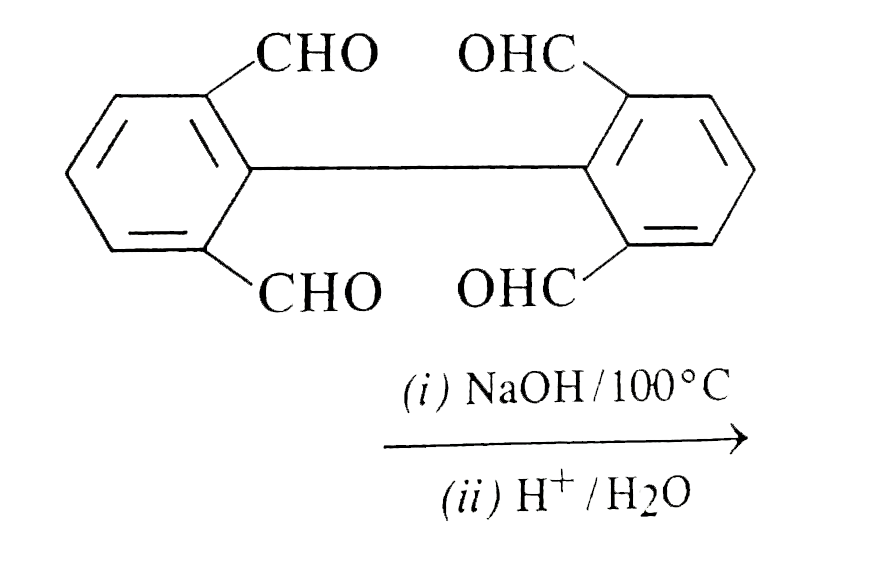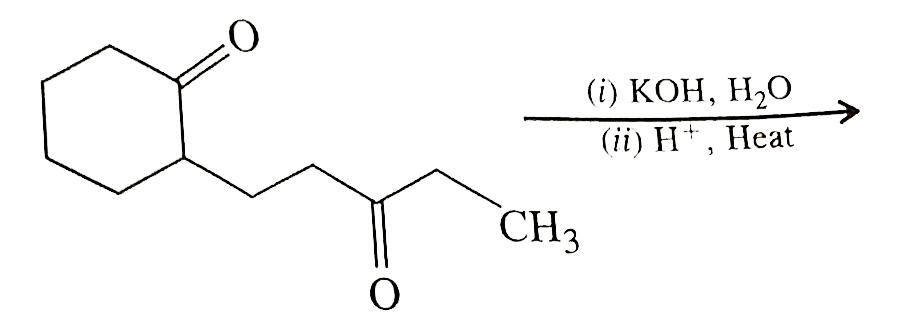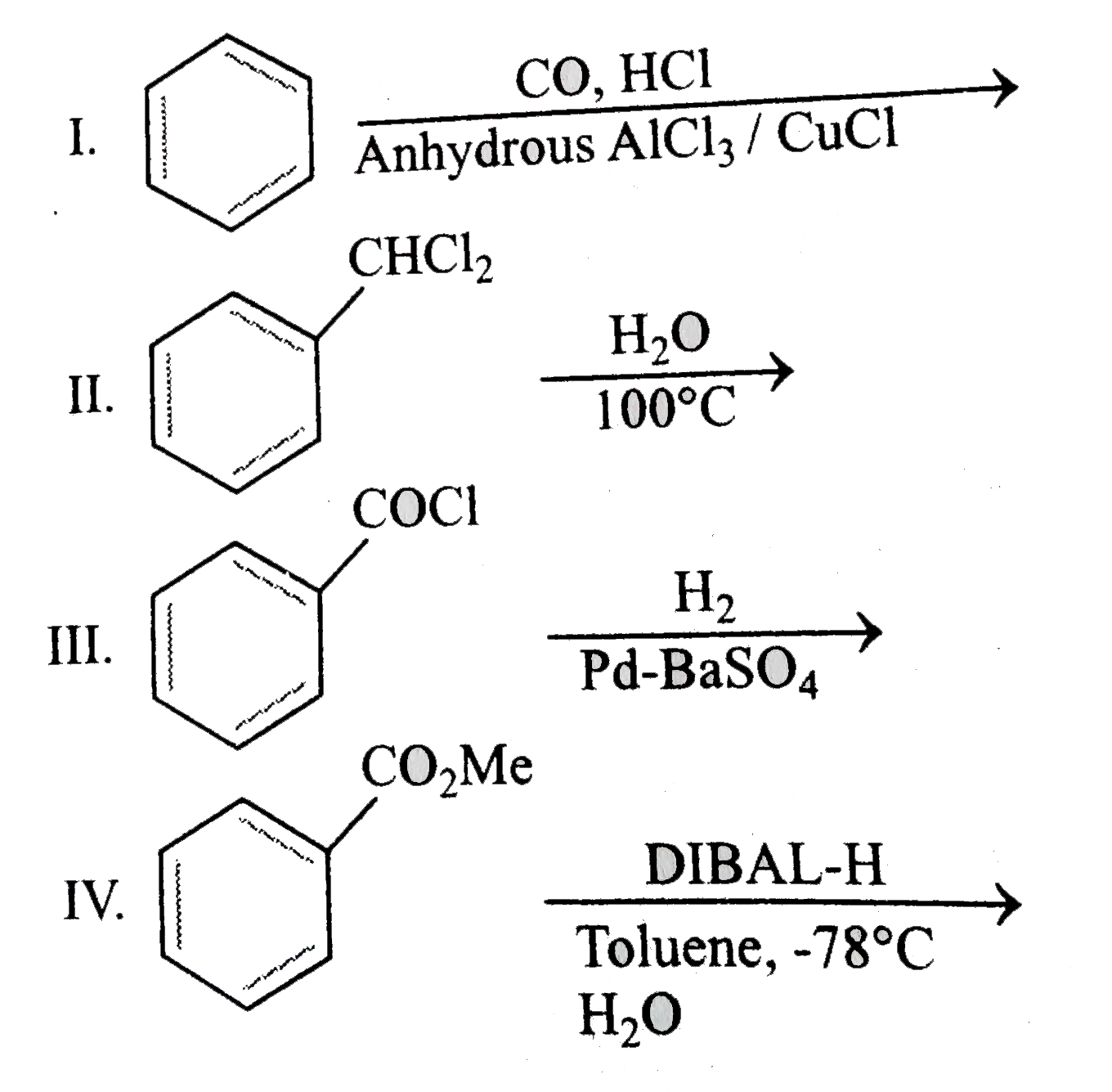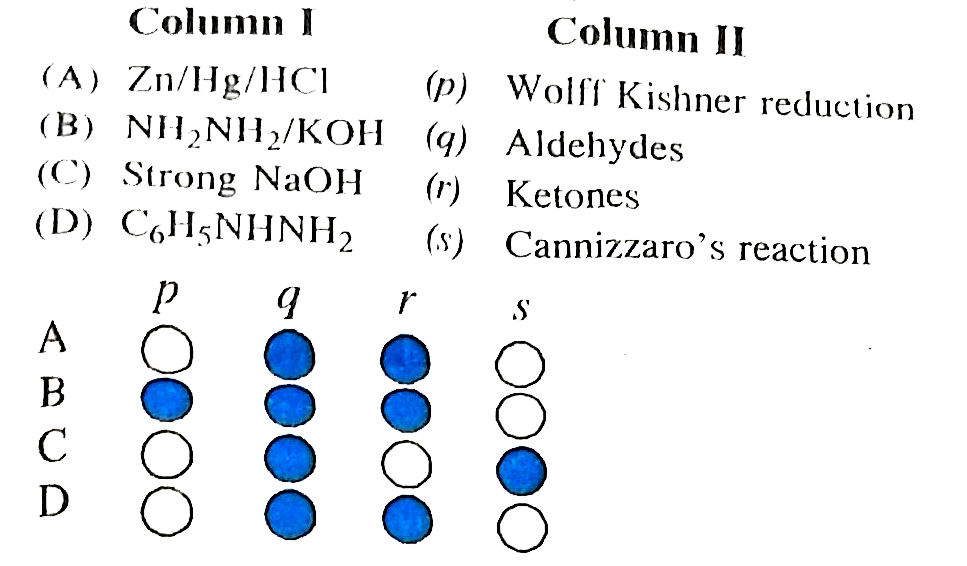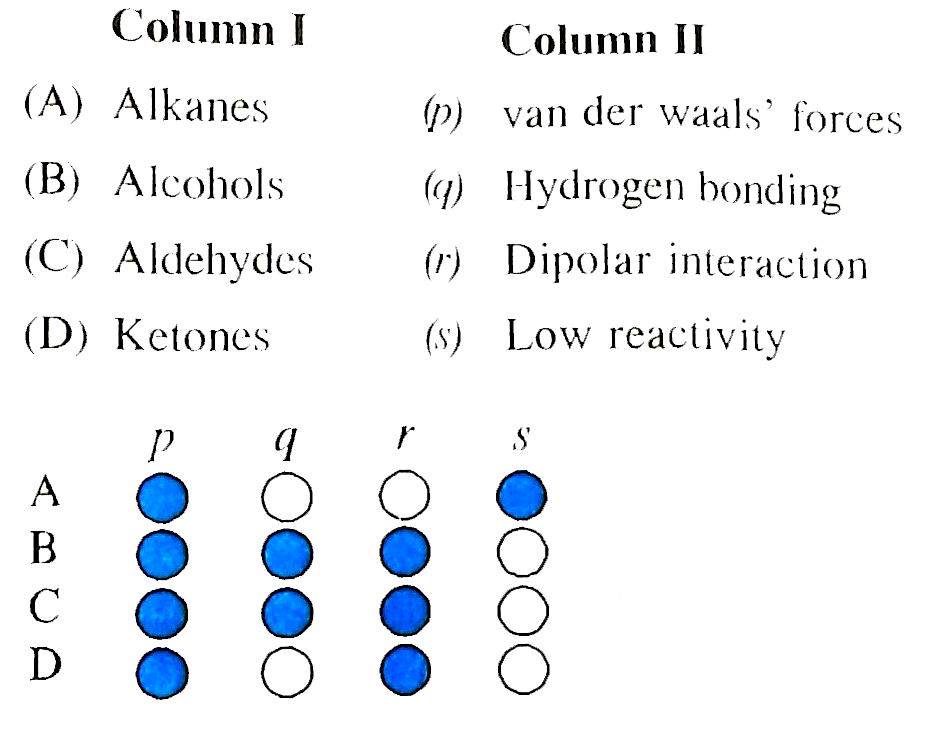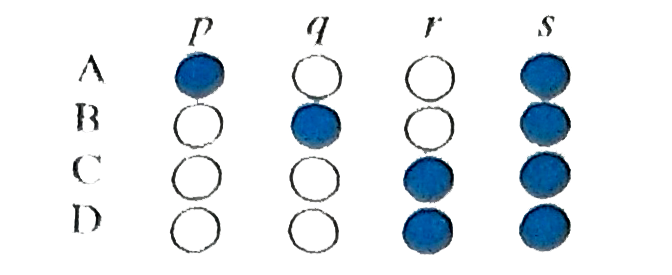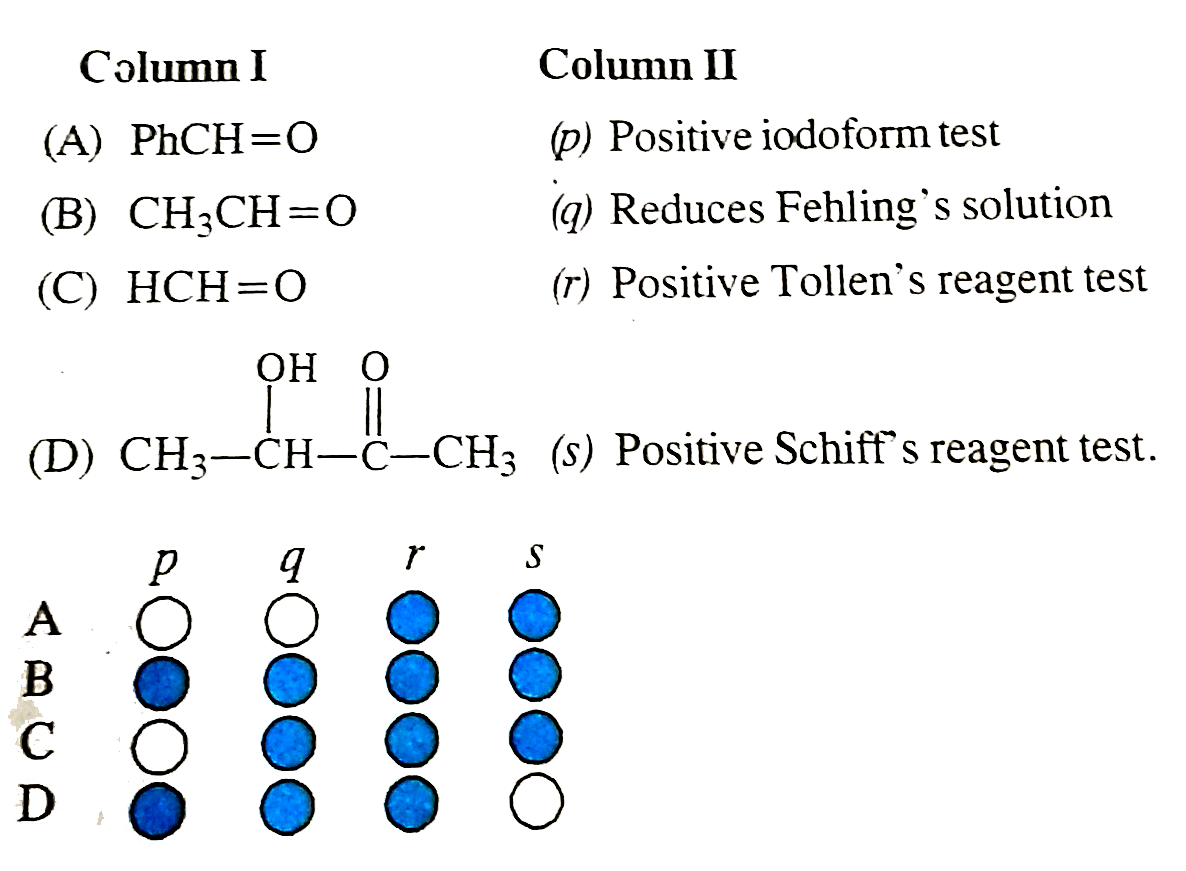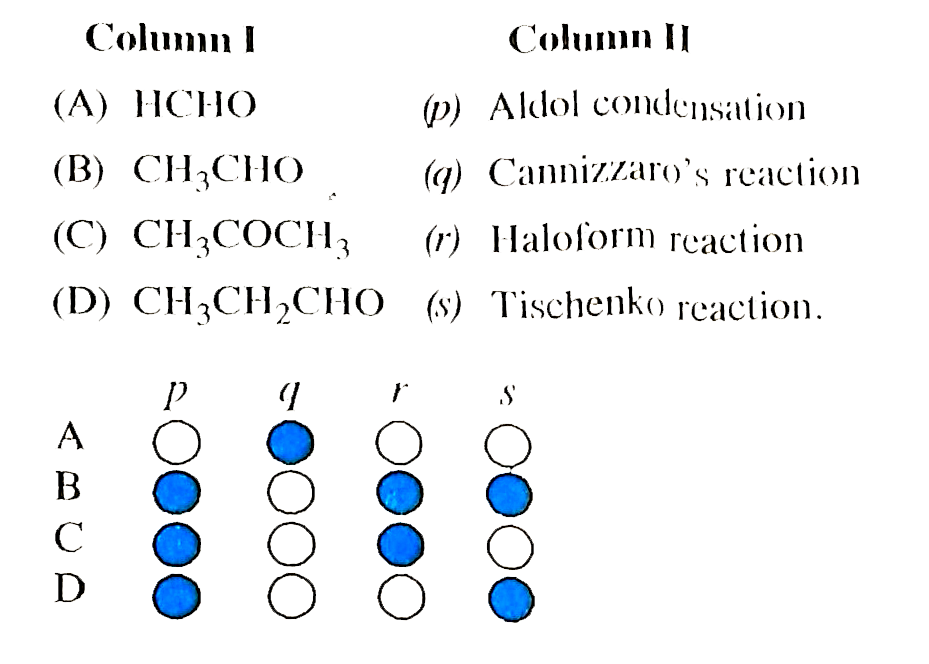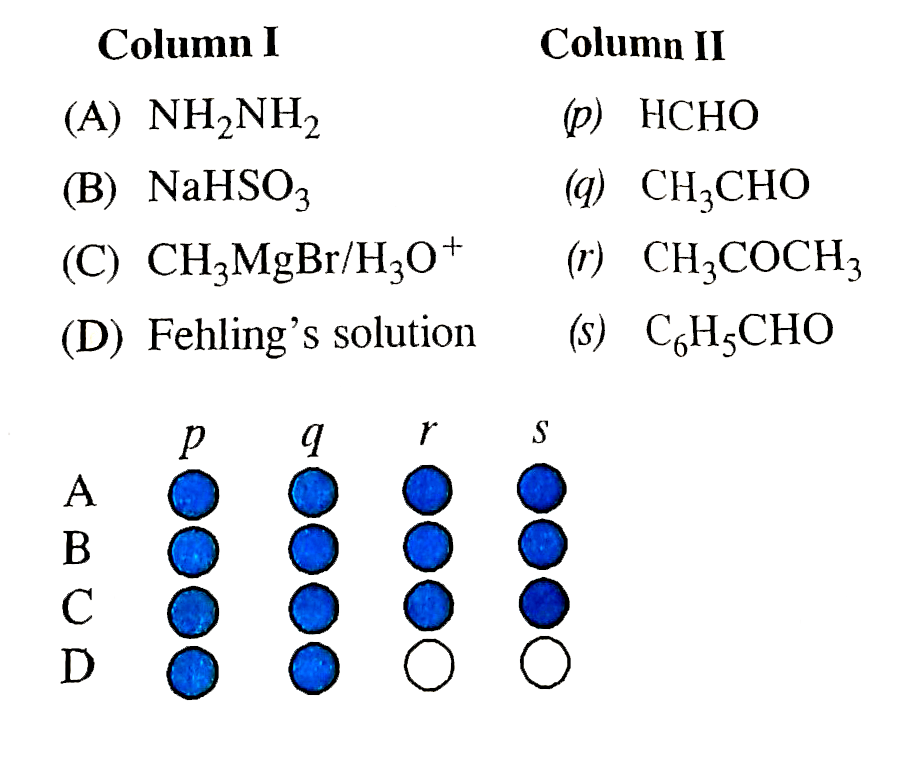Multiple Choice from S DINESH & CO CHEMISTRY (HINGLISH) Chapter 11:ALDEHYDES AND KETONES for Class 12
| Class 12 | CHEMISTRY |
| Chapter | ALDEHYDES AND KETONES |
| S DINESH & CO CHEMISTRY (HINGLISH) | Multiple Choice |
| Medium | English |
| Academic Year | 2023-2024 |
Question 65
Write the IUPAC names of :
(i) CH3CH2CH2C∣CH3HCH2CHO
(ii) CH3COCC2H5HCH2CH2Cl
(iii)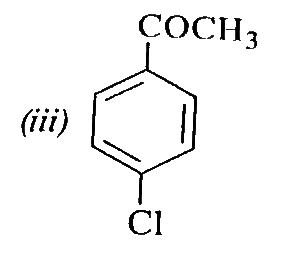
(iv)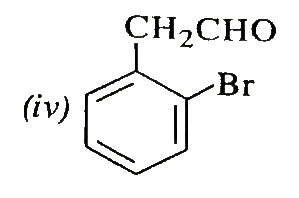
(v) CH3−C∣CH3H−O∣∣C−C∣CH3H−OC2H5
(vi) CH3−C∣CH3H−CO−C∣CH3H−CH3
(vii) CH3−C∣C6H5H−O∣∣C−C∣CH3HOCH2CH3
(viii) CH3−C∣CH3H−O∣∣C−C∣CH3H−Br
(ix) OCH.CHO
(x)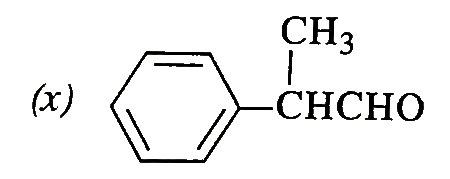
(xi) CH3−C∣NH2H−C∣OHH−C∣∣O−C2H5
(xii) CH3−CH2−CH∣CH3−CH2CHO
(xiii)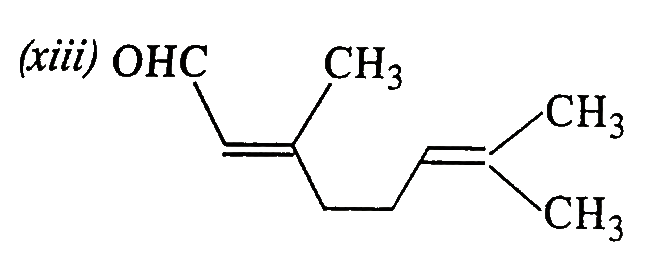
(xiv) CH3−C∣CH3H−CH2−CH2−C∣∣O−CH2Cl
(xv)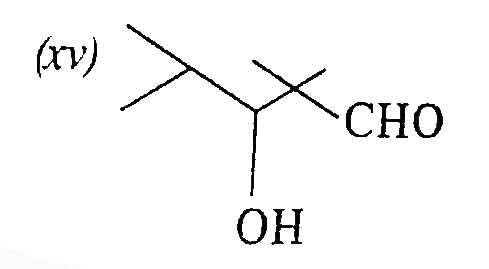
(xvi) CH3−CH2−CH=CH−O∣∣C−HView SolutionQuestion 66
Write sturcutre of the following compounds :
(i) Mesityl oxide , (ii) Pinacol
(iii) Pinacolone , (iv) Acetaldol
(v) Methyl vinyl ketone
(vi) Phorone
(vii) 3-Phenylprop-2-enal
(viii) 1-Phenylpropan-1-one.
(ix) 3-Methylbutanal
(x) p-Nitropropiophenone.
(xi) p-Methyl benzaldehyde.View SolutionQuestion 79
Write the names and strcutures of the products of following reactions :
(i) Oxidation of toluene with chromium trioxide and acetic anhydride
(ii) Reductive ozonolysis of 2,3-dimethylbut-2-ene
(iii) Heating ethane with water gas in the presence of oxocatalyst
(iv) Hydration of propyne with dilute H2SO4 and HgSO4.View SolutionQuestion 87
(a) You are provided with the following four reagents LiAlH4,I2/NaOH,NaHSO3 and Schiff's reagent. Which two reagents can be sued to distinguish between the compound in each of the following pairs:
(i) CH3CHO and CH3COCH3
(ii) CH3CHO and C6CH5CHO
(iii) C6H5COCH3 and C6H5COC6H5
(b) Write a note on Cannizzaro reaction View SolutionQuestion 224
In carbonyl compounds, the carbonyl group is polar as well as in sp2 hybridisation state. As a result, these compounds are highly reactive in nature and take part in the addition reactions. The mechanism of these reactions is nucleophilic in nature and is catalyseed in the weakly acidic medium. The extent of nycleophilic addition is influenced by two factors. These are steric effect of the groups attached to the carbonyl carbon atom. Both tend to decrease the reactivity of these compounds in the nuclephilic addition reactions.
Which of the following statements regarding carbonyl compounds is not correct?View SolutionQuestion 225
In carbonyl compounds, the carbonyl group is polar as well as in sp2 hybridisation state. As a result, these compounds are highly reactive in nature and take part in the addition reactions. The mechanism of these reactions is nucleophilic in nature and is catalyseed in the weakly acidic medium. The extent of nycleophilic addition is influenced by two factors. These are steric effect of the groups attached to the carbonyl carbon atom. Both tend to decrease the reactivity of these compounds in the nuclephilic addition reactions.
Which of the following statement is not true for carbonyl (>C=O) group?View SolutionQuestion 226
In carbonyl compounds, the carbonyl group is polar as well as in sp2 hybridisation state. As a result, these compounds are highly reactive in nature and take part in the addition reactions. The mechanism of these reactions is nucleophilic in nature and is catalyseed in the weakly acidic medium. The extent of nycleophilic addition is influenced by two factors. These are steric effect of the groups attached to the carbonyl carbon atom. Both tend to decrease the reactivity of these compounds in the nuclephilic addition reactions.
Important properties of carbon compounds are : nucleophilic addition and acidity of α-hydrogen atoms. ,
Which factor is most useful in explaning these two ?View SolutionQuestion 227
The α-hydrogen atom attached to the carbonyl group is acidic in nature because the carbanion which is left gets resonance stabilished. As a result, these compounds take part in the aldol condensation reactions. The carbanion acts as a nucleophile in these reactions. The compounds in which α-hydrogen is not acidic take part in the Cannizzaro's reaction. In this reaction, one molecule of the carbonyl compound under consideration is reduced to primary alcohol while the other is oxidised simutaneously to the carboxylic acid.
An organic compound 'A' of the molecular formula C5H10Cl2 is hydrolysed to compound 'B' C5H10O which gives an oxime with hydroylamine and yellow precipitate with a mixture of iodine and sodium hydroxide. The compound 'A' should be :View SolutionQuestion 228
The α-hydrogen atom attached to the carbonyl group is acidic in nature because the carbanion which is left gets resonance stabilished. As a result, these compounds take part in the aldol condensation reactions. The carbanion acts as a nucleophile in these reactions. The compounds in which α-hydrogen is not acidic take part in the Cannizzaro's reaction. In this reaction, one molecule of the carbonyl compound under consideration is reduced to primary alcohol while the other is oxidised simutaneously to the carboxylic acid.
A mixture of cinnamaldehyde and crotonaldehyde is treated with concentrated alkali.
C6H5βCH=αCHCHO+γCH3βCH=αCHCHOOH−−−→
Which statement is true about the above reaction ?View SolutionQuestion 229
The α-hydrogen atom attached to the carbonyl group is acidic in nature because the carbanion which is left gets resonance stabilished. As a result, these compounds take part in the aldol condensation reactions. The carbanion acts as a nucleophile in these reactions. The compounds in which α-hydrogen is not acidic take part in the Cannizzaro's reaction. In this reaction, one molecule of the carbonyl compound under consideration is reduced to primary alcohol while the other is oxidised simutaneously to the carboxylic acid.
Compound A (molecular formula C3H8O) is treated with acidified dichromate to form a product B (molecular formula C3H6O). B forms shining silver mirror on warning with ammoniacl silver nitrate. B when treated with an aqueous solution of H2NCOHNH2HCl and sodium acetate gives a product C. The structure of C is : View SolutionQuestion 230
A tertiary alcohol [H] upon acid catalysed dehydration gives a product [I]. Ozonolysis of [I] leads to compounds [J] to [K]. The compound [J] upon reactions with KOH gives benzyl alcohol a compound [L] wheras [K} on reaction with KOH gives only [M]. The compund [M] has the formula.
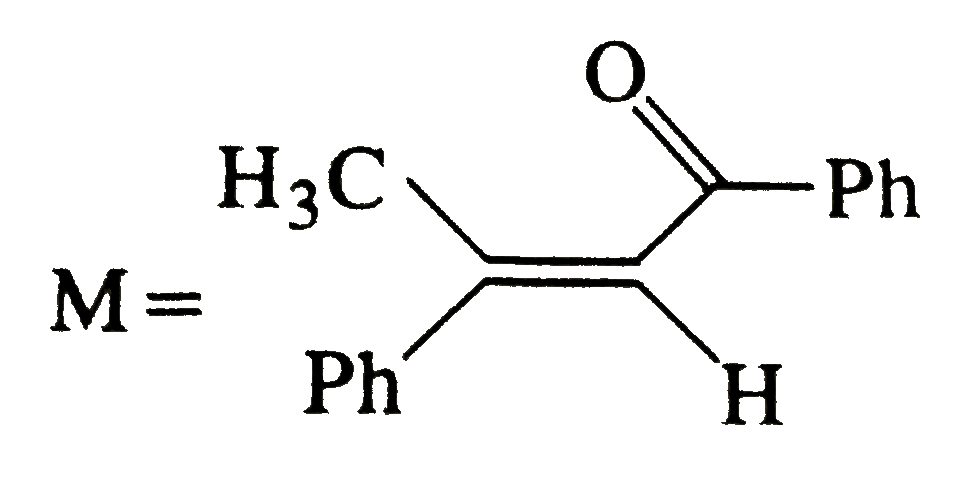
The compound [H] is formed by the reaction og : View SolutionQuestion 231
A tertiary alcohol [H] upon acid catalysed dehydration gives a product [I]. Ozonolysis of [I] leads to compounds [J] to [K]. The compound [J] upon reactions with KOH gives benzyl alcohol a compound [L] wheras [K} on reaction with KOH gives only [M]. The compund [M] has the formula.
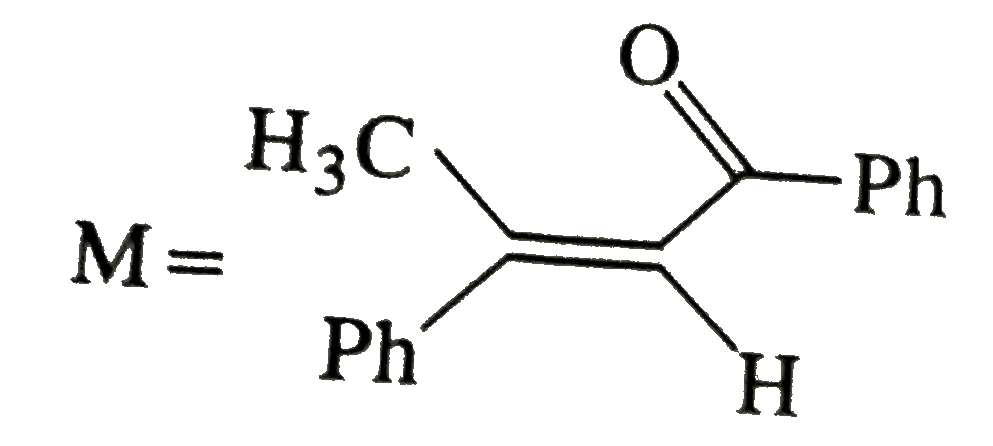
The structure of compound [I] is View SolutionQuestion 232
A tertiary alcohol [H] upon acid catalysed dehydration gives a product [I]. Ozonolysis of [I] leads to compounds [J] to [K]. The compound [J] upon reactions with KOH gives benzyl alcohol a compound [L] wheras [K} on reaction with KOH gives only [M]. The compund [M] has the formula.
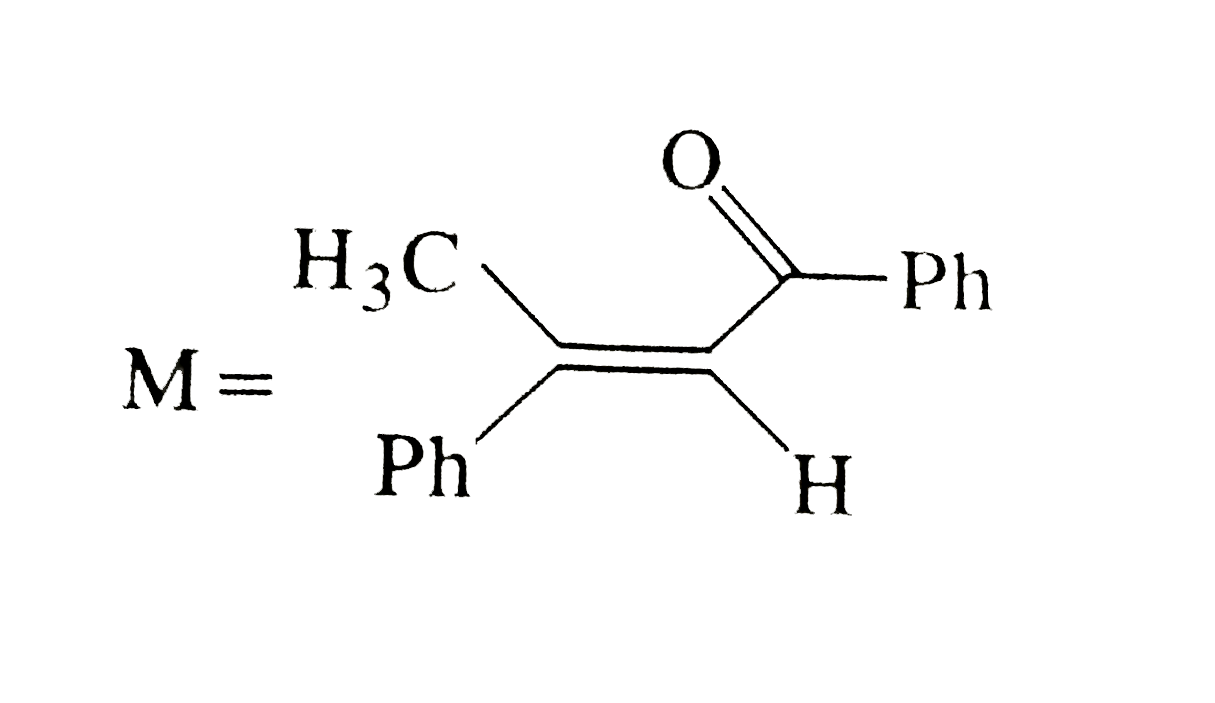
The structure of compounds [J],[K] and [L] are respectively : View SolutionQuestion 254
Compound 'A' (molecular formula C3H8O) is treated with acidified potassium dichromate to form a product 'B' (molecular formula C3H6O). 'B' forms a shinging silver mirror on warming with ammoniacal silver nitrate. 'B' when terated with an aqueous solution of H2NCONHNH2 ans sodium acetate gives a product 'C'. The structure of 'C' is : View Solution
All Exercises from S DINESH & CO CHEMISTRY (HINGLISH) Class 12 CHEMISTRY ALDEHYDES AND KETONES
- ALL QUESTIONS
- ASSERATION-REASON TYPE QUESTION
- COMPLETION OF THE MISSING LINKS
- COMPLETION REACTIONS
- COMPREHENSION
- COMPREHENSION 2
- COMPREHENSION 3
- COMPREHENSION 4
- COMPREHENSION 5
- COMPREHENSION 6
- COMPREHENSION 7
- COMPREHENSION I
- INTEGER TYPE QUESTIONS
- INTERGER
- MATCH THE COLOUMN
- MATRIX MATCH TYPE
- MCQ
- MULTIPLE CHOICE
- NOMENCLATURE AND ISOERISM
- PRACTICE TEST
- PREPARATION OF CARBONYL
- PROPERTIES OF CARBON
- R.Q.F.C.E
- REASON ASSERTION TYPE
- SELECT THE CORRECT ANSWER
- SELECTED STRAIGHT OBJECTIVE TYPE
- SOME TYPICAL CONVERSIONS
- ULTIMATE PREPARATHORY PACKAGE
- ALL QUESTIONS
- ASSERATION-REASON TYPE QUESTION
- COMPLETION OF THE MISSING LINKS
- COMPLETION REACTIONS
- COMPREHENSION
- COMPREHENSION 2
- COMPREHENSION 3
- COMPREHENSION 4
- COMPREHENSION 5
- COMPREHENSION 6
- COMPREHENSION 7
- COMPREHENSION I
- INTEGER TYPE QUESTIONS
- INTERGER
- MATCH THE COLOUMN
- MATRIX MATCH TYPE
- MCQ
- MULTIPLE CHOICE
- NOMENCLATURE AND ISOERISM
- PRACTICE TEST
- PREPARATION OF CARBONYL
- PROPERTIES OF CARBON
- R.Q.F.C.E
- REASON ASSERTION TYPE
- SELECT THE CORRECT ANSWER
- SELECTED STRAIGHT OBJECTIVE TYPE
- SOME TYPICAL CONVERSIONS
- ULTIMATE PREPARATHORY PACKAGE
- ALL QUESTIONS
- ASSERATION-REASON TYPE QUESTION
- COMPLETION OF THE MISSING LINKS
- COMPLETION REACTIONS
- COMPREHENSION
- COMPREHENSION 2
- COMPREHENSION 3
- COMPREHENSION 4
- COMPREHENSION 5
- COMPREHENSION 6
- COMPREHENSION 7
- COMPREHENSION I
- INTEGER TYPE QUESTIONS
- INTERGER
- MATCH THE COLOUMN
- MATRIX MATCH TYPE
- MCQ
- MULTIPLE CHOICE
- NOMENCLATURE AND ISOERISM
- PRACTICE TEST
- PREPARATION OF CARBONYL
- PROPERTIES OF CARBON
- R.Q.F.C.E
- REASON ASSERTION TYPE
- SELECT THE CORRECT ANSWER
- SELECTED STRAIGHT OBJECTIVE TYPE
- SOME TYPICAL CONVERSIONS
- ULTIMATE PREPARATHORY PACKAGE
- ALL QUESTIONS
- ASSERATION-REASON TYPE QUESTION
- COMPLETION OF THE MISSING LINKS
- COMPLETION REACTIONS
- COMPREHENSION
- COMPREHENSION 2
- COMPREHENSION 3
- COMPREHENSION 4
- COMPREHENSION 5
- COMPREHENSION 6
- COMPREHENSION 7
- COMPREHENSION I
- INTEGER TYPE QUESTIONS
- INTERGER
- MATCH THE COLOUMN
- MATRIX MATCH TYPE
- MCQ
- MULTIPLE CHOICE
- NOMENCLATURE AND ISOERISM
- PRACTICE TEST
- PREPARATION OF CARBONYL
- PROPERTIES OF CARBON
- R.Q.F.C.E
- REASON ASSERTION TYPE
- SELECT THE CORRECT ANSWER
- SELECTED STRAIGHT OBJECTIVE TYPE
- SOME TYPICAL CONVERSIONS
- ULTIMATE PREPARATHORY PACKAGE
- ADDITIONAL IMPORTANT QUESTION
- EXAMPLE
- HIGHER ORDER THINKING SKILLS
- PROBLEM
- QUESTION FROM BOARD
- ADDITIONAL IMPORTANT QUESTION
- EXAMPLE
- HIGHER ORDER THINKING SKILLS
- PROBLEM
- QUESTION FROM BOARD
- ADDITIONAL IMPORTANT QUESTION
- EXAMPLE
- HIGHER ORDER THINKING SKILLS
- PROBLEM
- QUESTION FROM BOARD
- ADDITIONAL IMPORTANT QUESTION
- EXAMPLE
- HIGHER ORDER THINKING SKILLS
- PROBLEM
- QUESTION FROM BOARD







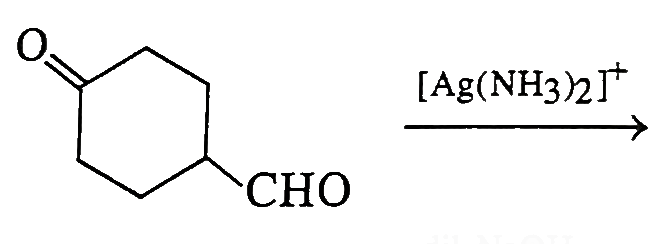
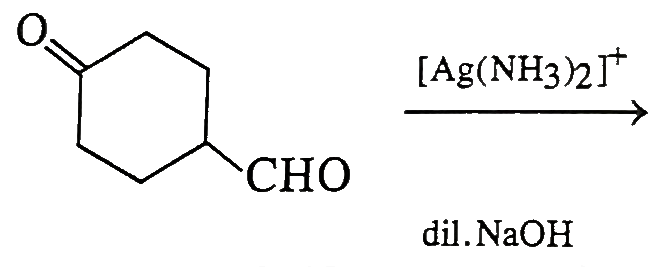


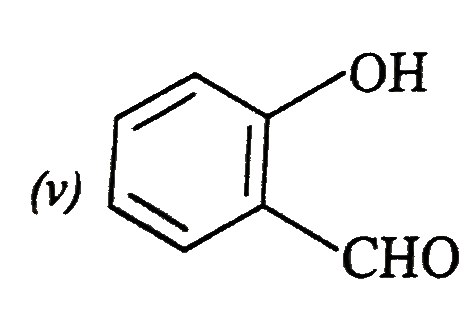





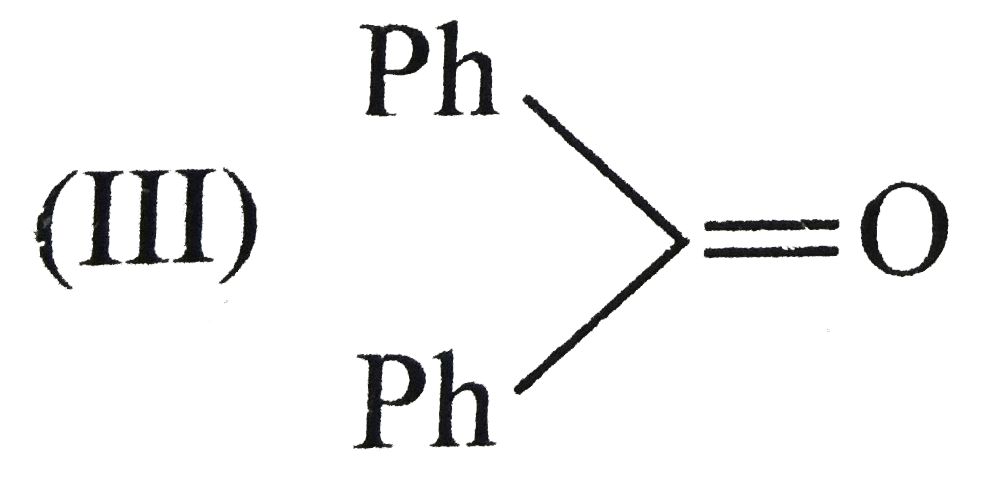 .
.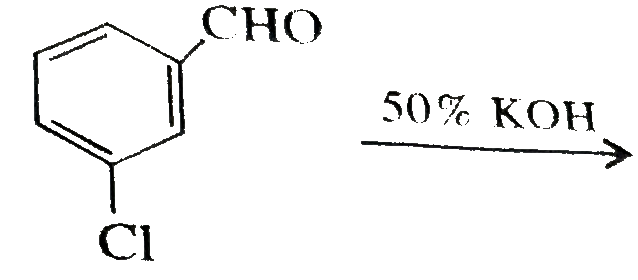
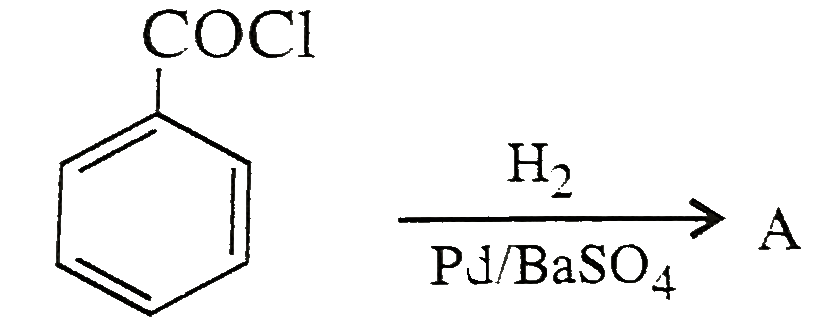
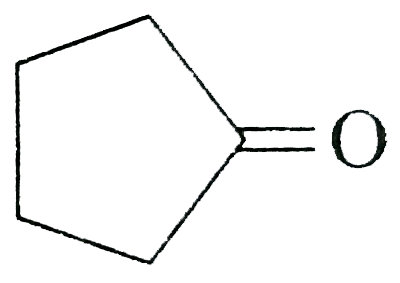 with methyl
with methyl 